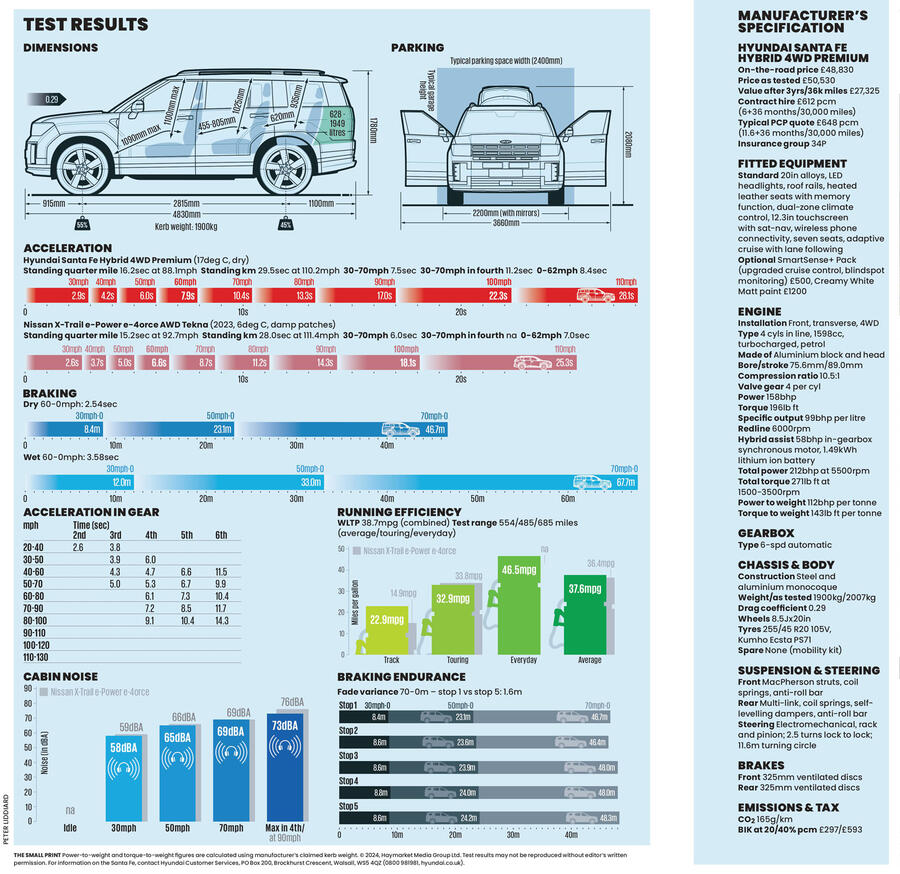To some extent, the Santa Fe Hybrid’s specs read as if they were compiled by some sort of random number generator. Its system power of 212 hp. it sounds surprisingly generous for an SUV with no sporting pretensions. It’s also powered by an engine displacing just 1.6 liters, albeit aided by a 58bhp electric motor. All that power, meanwhile, only results in a leisurely 0-100km/h time of 9.8sec.
A curb weight of 1,900kg (2,007kg as tested) undoubtedly blunts the Santa Fe’s performance, but at the MIRA proving ground our car was actually quicker than claimed, by quite a large margin. In fact, 0 to 62 mph took just 8.4 seconds.
Although the gearing doesn’t lie, the Santa Fe doesn’t really feel that fast in daily driving. We’ve seen similar in other Hyundai and Kia hybrids and non-electric hybrids in general.
Hyundai usually tries to go with the electric motor, but because of its modest power, the engine has to quickly step in. And anyway, with a battery capacity of just 1.49kWh, the electric drive won’t last long anyway.
When the petrol four-cylinder does come on, it does so with plenty of mechanical punch – the easy mid-range torque you’d want in a car like this just isn’t there. The situation is made worse by the long distance between the six gears, which means that if you demand even moderate acceleration, the engine will rev quite high before shifting into the next gear.
More testing experience tells us that the PHEV doesn’t suffer as much from these issues because it benefits from a more powerful electric motor. Compared to its peers, however, it can also handle a bit more electric power and mileage. Of course, it will need to be plugged in regularly to work properly.
Most of the time you can get around the drive’s prickliness by just taking it very easy. Once cruising speed is reached, the long gears prove their worth and the engine dies down. It’s worth remembering that the Peugeot 5008 Hybrid is similarly affected, but has a less smooth performance, and the Skoda Kodiaq 1.5 isn’t too gifted with grunt either, although it handles better under load. The hybrid system of the e-Power series of the Nissan X-Trail is the most advanced in the class, but not very efficient.
These types of cars were powered by a diesel engine by default and for good reason. While we have no shortage of oil engines in superminis, hybrids are struggling to fill the gap in big cars.
Dry stopping performance was as expected, with no noticeable fade, but the 67.7m braking distance in the wet is quite long. Pedal feel in normal driving is nicely progressive, and when not in Sport mode you can use the steering wheel paddles to control the level of regeneration, which is a nice feature in a hybrid.


